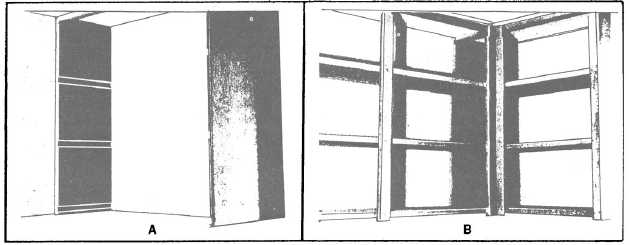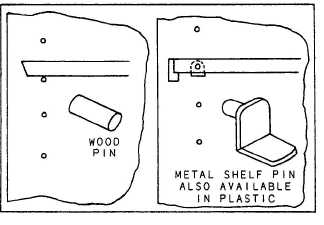
Figure 3-70.-End panels of a wall cabinet in place (view A) and completed framing with facing partially applied (view B).
before assembly. Some adjustable shelf supports can be mounted on the surface.
Shelving supports for 3/4-inch shelves should be placed no more than 42-inches apart. Shelves designed to hold heavy loads should have closer supports. To improve the appearance of plywood shelving, cover the laminated edge with a strip of wood that matches the stock used for the cabinet.
Cabinet Facing
After completing the frame construction and shelving, apply finished facing strips to the front of the cabinet frame. These strips are sometimes assembled into a framework (called a faceplate or face frame) by commercial sources before they are

Figure 3-71.-Two methods of supporting shelves.
attached to the basic cabinet structure. The vertical members of the facing are called stiles, and the horizontal members are known as rails.
As previously mentioned for built-in-place cabinets, you cut each piece and install it separately. The size of each piece is laid out by positioning the facing stock on the cabinet and marking it. Then, the finished cuts are made, A cut piece can be used to lay out duplicate pieces.
Cabinet stiles are generally attached first, then the rails (figure 3-72). Sometimes a Builder will attach a

Figure 3-72.-Facing being placed on a cabinet.
Continue Reading